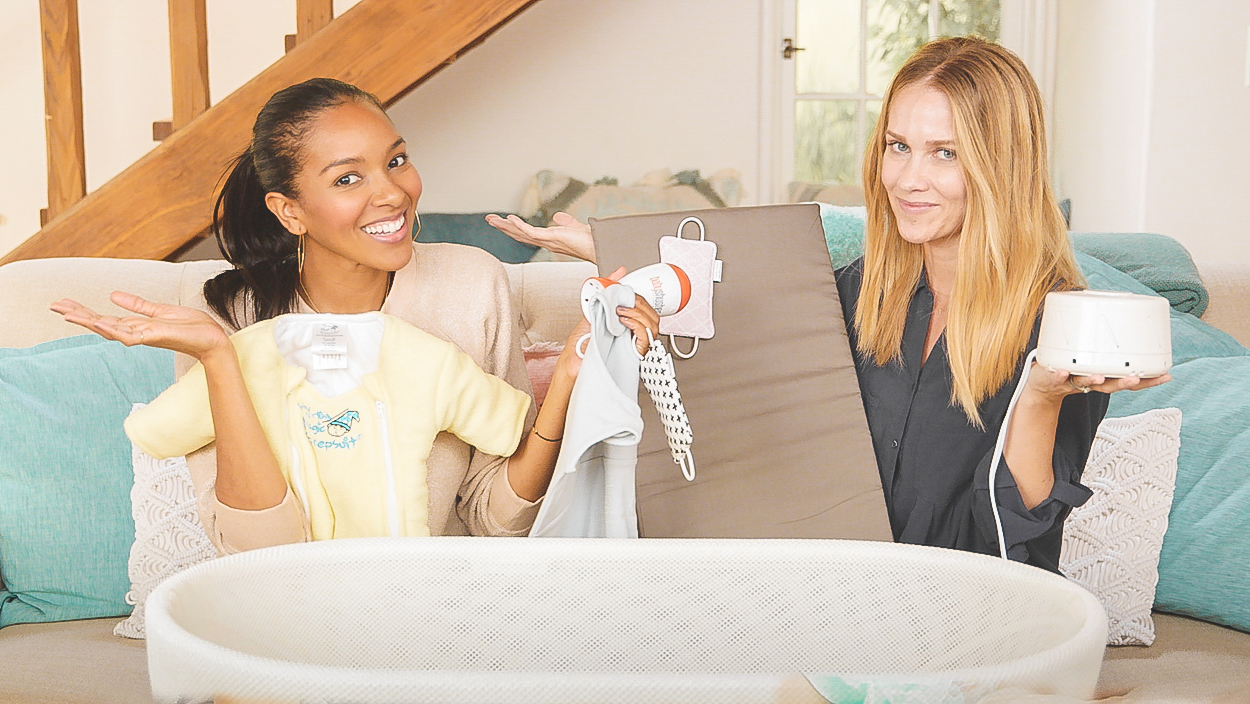

Approved by the What’s Up Moms Medical Advisory Board
By three months, your little dumpling is starting to look (and act!) less like a newborn and more like an actual alert human. Not only is she filling out and looking more like a baby baby, but she’s aware of her surroundings, and possibly beginning to consolidate sleep at night by going 5-6 hour stretches. Woohoo! If she’s not, don’t stress, as each kid is different. But you can take solace in the fact that by now, baby is producing the hormone melatonin — a natural neurotransmitter that helps set the body’s circadian rhythm.
[Read on to learn more about your 3-month-old and sleep, or if you’re really chomping at the bit to get schedule-y….Scroll down for a sample schedule!]
Baby is still not developmentally ready for an actual schedule, but you can help lay the groundwork for one by establishing routines and patterns. For example…
- DO continue to give shape to your day with the Eat, Play, Sleep structure.
- DO make the timing fixed at a few points during the day. Even though the internal components of each day are fluid, you can now set bedtime at a fixed time each night. Same with the morning nap.
- DO practice placing the baby down in the crib drowsy but awake so she can start to practice independent sleep. Baby isn’t ready for actual night weaning just yet, so right now you’re just prepping.
- DO Start paying attention to how much baby sleeps during the day. You don’t want to let her sleep too much, so wake her at the three-hour mark, and if she’s hard to rouse, feel free to get her a little uncomfortable; some fresh air on bare skin does wonders. (However, depriving baby of sleep during the daytime to make her sleep better at night is not a thing; it’ll only increase her cortisol levels and give her a second wind come evening.)
- DO let in lots of sunlight during the day.
- DO feed a lot during the day.
- DO consider transitioning baby out of the bassinet or co-sleeper and into a crib if you haven’t already. Keep it clear of soft bedding and toys.
- DO start trying to have baby nap at home rather than on-the-go. She’s becoming more alert to her surroundings, and napping at home in a darkened, quiet room will allow for better quality sleep.
- DO let baby try sleeping without a swaddle. You’ll know she’s done with it when she starts to 1) use her arms and shoulders to bust out of it like the Incredible Hulk, or 2) roll over by herself. By now baby’s startle reflex is fading and her movements are becoming less jerky, so the swaddle becomes less necessary. (For warmth and coziness, she’ll then use sleep sacks or footie pajamas.) Once baby can sleep with her hands-free, she’ll be able to use them as a soothing tool — AKA a built-in pacifier — to help her sleep.
- DO establish a consistent bedtime routine. A wind-down routine may include a bath, massage, feeding, song, and book. The goal is consistency, so come up with something that’s sustainable and stick with it. Start the routine earlier than you think necessary so she’s not too overtired to get through it; many parents aim for a bedtime in the 7-8 pm window. Soon baby will be recognizing and responding to these calming “slow down” cues — including the dim lighting — at the end of the day.
Sample schedule for a 3-month-old
At three months, baby is generally sleeping 11-12 hours at night and 3-4 hours during the day. Most will take three naps per day, others four; usually one of those naps is longer — often the morning nap — and the others may be as short as 30 minutes.
7:30a – Wake and feed
8:00a – Play!
9:00a – Nap #1
10:30a – Wake and feed
11:00a – Play!
12:30p – Nap #2
1:30p – Wake and feed
2:00p – Play! This is likely to be baby’s longest awake increment of the day, so bust loose, i.e. get out of the house.
3:30 or 4:00p – Cat nap (often, especially if you have an older child, this catnap is on-the-go — in the car, stroller, sling, or carrier)
5:30p – Wake and feed
6:00p – Play!
7:00 – Wind down! Now’s the time for your calming evening routine: books (yes, you can and should), bath, feeding/cluster feeding
7:30 or 8:00 – sleep
10:30 or 11:00 – “dream feed,” if this is your preference
Nighttime feedings will vary but will likely be 1-3.







